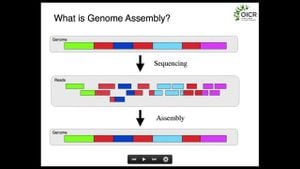Tropical Storm Sara has begun to take shape as it churns through the warm waters of the Caribbean, and forecasters from the National Hurricane Center (NHC) are urging residents—especially those along the eastern Gulf Coast—to keep a close eye on its movements. With its potential to bring life-threatening conditions, especially to Central America, the impact of this storm is already being felt across the region.
Earlier this week, the system, initially dubbed Tropical Depression 19, intensified to become Tropical Storm Sara. Located about 65 miles off the northern coast of Honduras, the storm packs maximum sustained winds of around 40 mph and is expected to strengthen as it continues to hover near the coast. Such conditions can fuel tropical systems, and as the storm remains over the remarkably warm waters of the Caribbean, it is forecasted to gain strength over the coming days.
Forecasters predict Sara will linger off the coast of Honduras through the weekend, delivering staggering rainfall amounts of 10 to 20 inches, with isolated areas receiving up to 30 inches. This deluge raises alarms for flash flooding and mudslides, particularly along mountainous regions. Residents are advised to take these warnings seriously, as the NHC has categorized this as “potentially catastrophic” rainfall.
Hurricane hunters are actively monitoring the storm, flying missions to gather data about its strength and structure. Given the existing low-pressure system, predictions have been made using various models—often referred to as spaghetti plots—suggesting the storm has various potential paths it might take. According to these models, should Sara maintain its strength as it enters the Gulf of Mexico, there could be risks for Florida by late next week.
The upcoming days are key, as the storm may take various routes: it could make landfall in Honduras, which may weaken it significantly, thereby reducing its impact when reaching the US. Alternatively, if it remains close to the coast, it may traverse the Gulf with more vigor and pose greater threats to landfall at some point. Residents of Honduras and Nicaragua are already preparing for adverse conditions, including high winds and flooding.
Yet, as projections point to uncertainties, forecasters caution Florida residents not to be complacent. While the storm may weaken as it passes over land and through Mexico's Yucatan Peninsula, residual effects may still present themselves. Florida’s Western coast is particularly on alert, with potential impacts not just limited to strong winds but also heavy rainfall and flooding concerns, especially as many residents are still recovering from earlier storms this hurricane season.
Jon Porter, Chief Meteorologist at AccuWeather, emphasizes the importance for Floridians to remain vigilant: “We could see heavy rainfall and flooding concerns in parts of central and south Florida next week. Florida does not need more tropical storm impacts; many people are still recovering and trying to rebuild from hurricane landfalls earlier this year.”
Historically, November hurricanes are relatively rare, but the trend of warmer ocean temperatures due to climate change is resulting in unusual activity this late in the season. The storm is noted as the third named storm of November, which seasoned meteorologists view as atypical. The same conditions amplified the storm’s potential and provided unusual warmth, prompting climate conversations around the table more fervently now than ever.
The forecast models vary, leading to varying levels of confidence about Sara’s potential impact on Florida's coast. Still, forecasters recognize the unpredictability of such systems; hence, continuous updates remain imperative. The National Weather Service (NWS) and NHC regularly provide updates and urge residents to stay informed via reliable sources.
With all these factors, the repeated sentiment across agencies is simple yet firm: Forecasters caution, even if the storm weakens considerably, the impacts, primarily flooding and rainfall, can still bring significant discomfort and risks to states like Florida. It only takes one storm to change lives forever, and as meteorologists note, “Don’t stop watching this system yet.”
It's worth monitoring, especially as mid-next week approaches, bringing more activity to Florida who may just experience the aftereffects of such systems. Hurricane season technically runs until November 30, so vigilance is key.
Residents are encouraged to take this forecast seriously: make preparations, seek information, and remain alert as Tropical Storm Sara evolves. The storm serves as another reminder of the enduring unpredictability of weather patterns, especially during this time of year when conditions can pivot rapidly.



